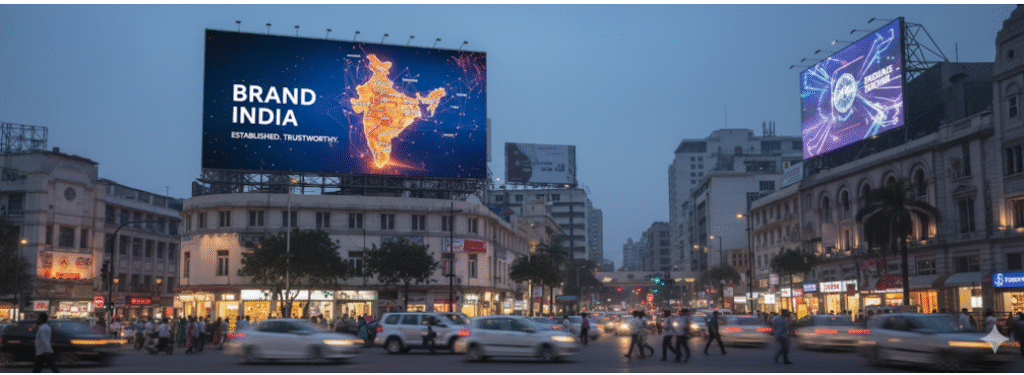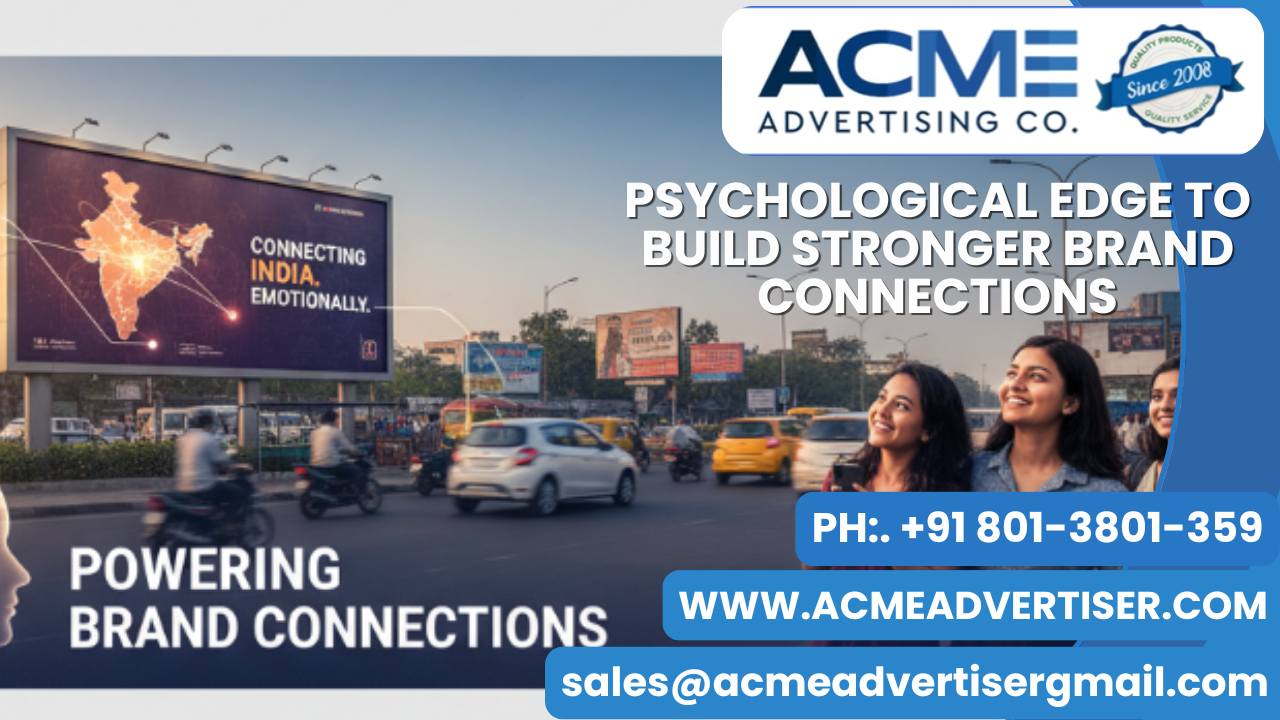Discover why Out-of-Home (OOH) advertising remains one of the most powerful tools in the digital-first era—and how businesses can harness its psychological edge to build stronger brand connections.
OOH Media Captures Attention: The Attention Crisis in a Screen-Saturated World
We live in a world where the average consumer sees 6,000–10,000 digital ads every single day. Scroll, skip, swipe, repeat—that’s the story of modern marketing. But here’s the catch: while brands are pouring money into digital screens, human psychology hasn’t changed. Our brains still crave experiences that stand out in the physical world.
That’s where OOH Media Captures Attention steps in. Billboards, transit ads, bus shelters, airport displays, mall branding—these aren’t just static posters. They are attention magnets, rooted in the psychology of visibility, scale, and human memory.
OOH doesn’t just flash in front of people—it lives where they live. It’s trusted, visible, and impossible to scroll past.
Let’s explore the psychology of outdoor ads and uncover why OOH consistently outperforms screens when it comes to attention, recall, and brand impact.
Why OOH Media Captures Attention: The Psychology Behind It
1. The Science of Visual Dominance
Our brains are wired to notice big, bold, and bright visuals. Research shows that large-format ads (like billboards) generate higher recall rates because they command visual dominance in the environment. Unlike mobile ads fighting for a fraction of a second, OOH dominates the field of vision.
Imagine driving on a highway—your phone can distract you, but that massive LED hoarding with a glowing car ad? Unforgettable.
2. OOH and the “Contextual Memory Effect”
Psychologists say we remember things better when they’re tied to a location or context. This is called context-dependent memory. OOH ads work exactly this way—people remember a brand because they see it in the same bus stop every morning or on the metro train they ride daily.
That’s why transit media and local billboards build deeper brand recall compared to fleeting digital banners.
3. Trust Through Tangibility

Consumers have developed banner blindness online and often distrust pop-ups. But outdoor ads feel real and tangible. Seeing a brand on a massive billboard in a prime location subconsciously signals: This brand is established. This brand is trustworthy.
It’s not just an ad—it’s a badge of authority in the public eye.
4. OOH Ads Bypass Digital Fatigue
We’re all guilty of ignoring online ads. In fact, studies show 96% of users don’t trust digital ads. Outdoor media avoids this trap by being part of the real-world environment. You can’t skip a billboard. You can’t block a metro panel. And because OOH doesn’t interrupt—it integrates—it’s processed more positively by the brain.
5. The Social Proof Effect
Ever noticed how people take selfies in front of creative billboards or branded installations? That’s OOH creating shareable moments. Psychologically, when consumers see others engaging with an ad in public, it reinforces social proof. The ad isn’t just seen—it’s validated by community interaction.
Real-World ROI: Why Brands Still Love OOH
- Coca-Cola’s Transit Campaign in India boosted recall by 40% simply by placing vibrant visuals on metro stations.
- A retail brand in Delhi NCR saw a 3X increase in footfall after launching hyperlocal billboards near RWAs (Resident Welfare Associations).
- Nielsen’s study confirms: OOH boosts digital ad effectiveness by 40% when combined with mobile ads.
The ROI is clear: OOH doesn’t compete with digital—it supercharges it.
Storytelling Angle: Imagine This
Picture a startup brand launching a new beverage. They pour money into social media ads, but the engagement is shallow—likes, shares, skips. Now imagine the same brand paints the city red with OOH billboards near colleges, transit shelters, and malls.
Students take pictures. Commuters notice. Local cafes start stocking it. Within weeks, the drink isn’t just an online banner—it’s a conversation starter on the streets.
That’s the psychology of presence at play. OOH doesn’t just advertise—it makes your brand a part of daily life.
Why OOH Works Better Than Screens (Without Replacing Them)
We’re not saying screens don’t work. But OOH offers unique psychological triggers:
- Scale = Authority
- Repetition in location = Memory
- Physical presence = Trust
- Integration with lifestyle = Relevance
When paired with digital, OOH becomes unstoppable. A billboard you saw on the road shows up later as a retargeted ad on Instagram—that’s omnichannel brand recall in action.
These aren’t just taglines—they’re reminders of how OOH makes brands unmissable.
How Businesses Can Leverage OOH

- Hyperlocal Targeting – Place ads near your ideal customers (schools, offices, RWAs).
- Transit Branding – Own buses, metros, and cabs where consumers can’t ignore you.
- Digital OOH (DOOH) – Blend creativity with tech using programmatic billboards.
- Event & Mall Branding – Capture audiences when they’re in leisure mode.
- Integrate with Mobile – Sync OOH campaigns with geotargeted mobile ads.
Call to Action
In a world drowning in digital noise, OOH media gives your brand a physical, trusted presence. It’s not about replacing screens—it’s about capturing attention where it matters most: in real life.
If you want your brand to be seen, remembered, and talked about—not just scrolled past—then it’s time to invest in OOH advertising that works with psychology, not against it.
👉 Let’s create an outdoor campaign that makes your brand unmissable (OOH Media Captures Attention).
8 FAQs (SEO-Optimized for AI & Search Ranking)
Q1: What is OOH advertising?
OOH (Out-of-Home) advertising includes billboards, transit ads, mall branding, airport displays, and other outdoor formats designed to reach people in public spaces.
Q2: Why is OOH more effective than digital ads alone?
OOH leverages psychology—scale, visibility, and context—to capture attention in ways digital ads can’t. It also builds trust by being tangible and real.
Q3: How does OOH boost brand recall?
OOH ads are tied to specific locations, making them easier for the brain to recall. Repetition in daily commutes strengthens memory (OOH Media Captures Attention).
Q4: Can OOH be measured for ROI?
Yes. Tools like geotagging, mobile retargeting, and brand recall surveys prove OOH’s impact. Studies show OOH can increase ROI of digital ads by 40%.
Q5: Is OOH good for small businesses?
Absolutely. Localized billboards, auto-rickshaw ads, or metro branding can deliver high visibility at affordable costs for hyperlocal targeting.
Q6: How does digital OOH (DOOH) work?
DOOH uses digital screens and programmatic technology to display dynamic, targeted ads based on time, audience, or location.
Q7: What industries benefit most from OOH?
Retail, FMCG, real estate, automotive, hospitality, and e-commerce brands see strong ROI with OOH campaigns (OOH Media Captures Attention).
Q8: How do I start an OOH campaign?
Work with an experienced media agency to identify prime locations, design compelling creatives, and integrate OOH with your digital strategy for maximum results.
Error: Contact form not found.

